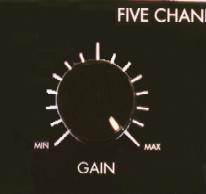Language
Unity Gain Explained And Why It's Important
If you’ve ever heard the term “Unity Gain” but don’t have much of a clue on what it is exactly – let alone why it’s important – you’re not alone. The core principle behind unity gain is having the input level match the output level in either a single device or a signal chain. In other words, if you have one volt entering the beginning of your chain and you also get one volt out at the end of it, you have “unity gain.” While that might not seem like much, it’s actually pretty important and even critical depending on the application. Read on to find out exactly why.
 The Difference Between Gain And Trim[/caption]
While the term “Gain” itself is fairly ambiguous and can refer to a few different things in the world of electronics, the type of gain we talk about when we look at amps and audio gear is voltage input. This type of gain refers to a device’s ability to take an input signal and bring it up to a higher voltage level. And while similar, gain is not the same as a volume control (read more about their differences in our Volume And Gain article).
As far as unity gain goes, it essentially entails matching the input and output stages between devices to the same level for better signal transfer. If you’re using a mic and a mixing console, for example, the input and output levels of both should all be equal in order to establish unity gain. When all of your devices have been properly matched, you should be able to take out any one of them without affecting the voltage of the signal.
The Difference Between Gain And Trim[/caption]
While the term “Gain” itself is fairly ambiguous and can refer to a few different things in the world of electronics, the type of gain we talk about when we look at amps and audio gear is voltage input. This type of gain refers to a device’s ability to take an input signal and bring it up to a higher voltage level. And while similar, gain is not the same as a volume control (read more about their differences in our Volume And Gain article).
As far as unity gain goes, it essentially entails matching the input and output stages between devices to the same level for better signal transfer. If you’re using a mic and a mixing console, for example, the input and output levels of both should all be equal in order to establish unity gain. When all of your devices have been properly matched, you should be able to take out any one of them without affecting the voltage of the signal.
Gain and Unity Gain
[caption id="attachment_5732" align="alignright" width="149"] The Difference Between Gain And Trim[/caption]
While the term “Gain” itself is fairly ambiguous and can refer to a few different things in the world of electronics, the type of gain we talk about when we look at amps and audio gear is voltage input. This type of gain refers to a device’s ability to take an input signal and bring it up to a higher voltage level. And while similar, gain is not the same as a volume control (read more about their differences in our Volume And Gain article).
As far as unity gain goes, it essentially entails matching the input and output stages between devices to the same level for better signal transfer. If you’re using a mic and a mixing console, for example, the input and output levels of both should all be equal in order to establish unity gain. When all of your devices have been properly matched, you should be able to take out any one of them without affecting the voltage of the signal.
The Difference Between Gain And Trim[/caption]
While the term “Gain” itself is fairly ambiguous and can refer to a few different things in the world of electronics, the type of gain we talk about when we look at amps and audio gear is voltage input. This type of gain refers to a device’s ability to take an input signal and bring it up to a higher voltage level. And while similar, gain is not the same as a volume control (read more about their differences in our Volume And Gain article).
As far as unity gain goes, it essentially entails matching the input and output stages between devices to the same level for better signal transfer. If you’re using a mic and a mixing console, for example, the input and output levels of both should all be equal in order to establish unity gain. When all of your devices have been properly matched, you should be able to take out any one of them without affecting the voltage of the signal.

